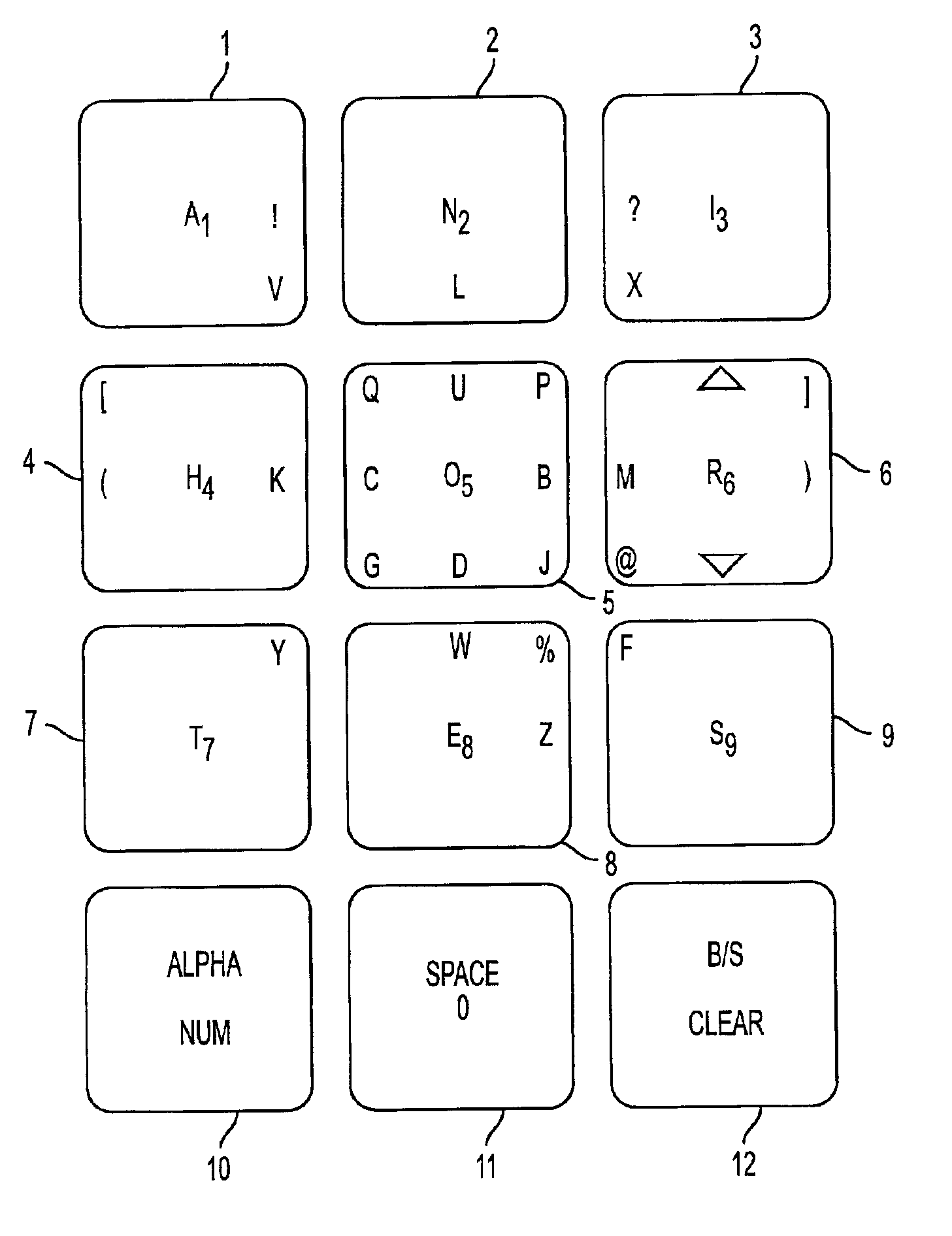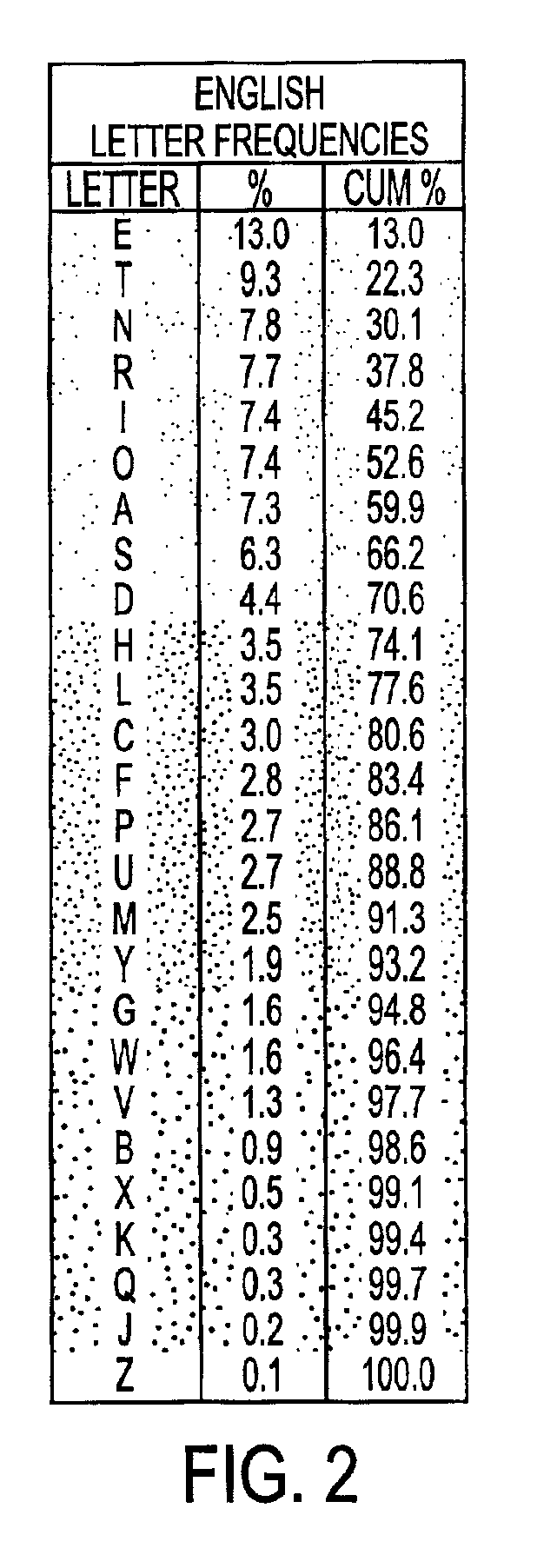Method and apparatus for alphanumeric data entry using a keypad
- Summary
- Abstract
- Description
- Claims
- Application Information
AI Technical Summary
Benefits of technology
Problems solved by technology
Method used
Image
Examples
Embodiment Construction
FIG. 3 shows a keypad having an array of keys 1-12 for entry of alphanumeric data according to the present invention. As defined herein, a key is a specified area within a user interface, such as a keypad, that is activated to generate a character signal representing a selected letter. Examples of keys include electronically or mechanically actuated switches, buttons disposed on the surface of a user interface as well as electronically generated indicia on a user interface display, such as a LCD. The array of keys comprises M rows and N columns, where M and N could be the same or different integers. The alphanumeric information corresponds to letters in an alphabetical system, where the number of letters is equal to L. In the exemplary embodiment shown in FIG. 3, the keypad uses the same pattern of numbers as used in the 12-key layout. However, the letters and non-letter symbols and characters are entered using a different layout as described below.
The array of keys 1-12 comprises 4...
PUM
 Login to View More
Login to View More Abstract
Description
Claims
Application Information
 Login to View More
Login to View More - R&D
- Intellectual Property
- Life Sciences
- Materials
- Tech Scout
- Unparalleled Data Quality
- Higher Quality Content
- 60% Fewer Hallucinations
Browse by: Latest US Patents, China's latest patents, Technical Efficacy Thesaurus, Application Domain, Technology Topic, Popular Technical Reports.
© 2025 PatSnap. All rights reserved.Legal|Privacy policy|Modern Slavery Act Transparency Statement|Sitemap|About US| Contact US: help@patsnap.com



